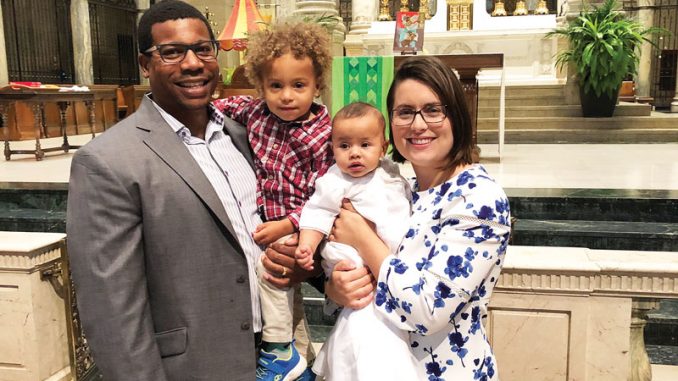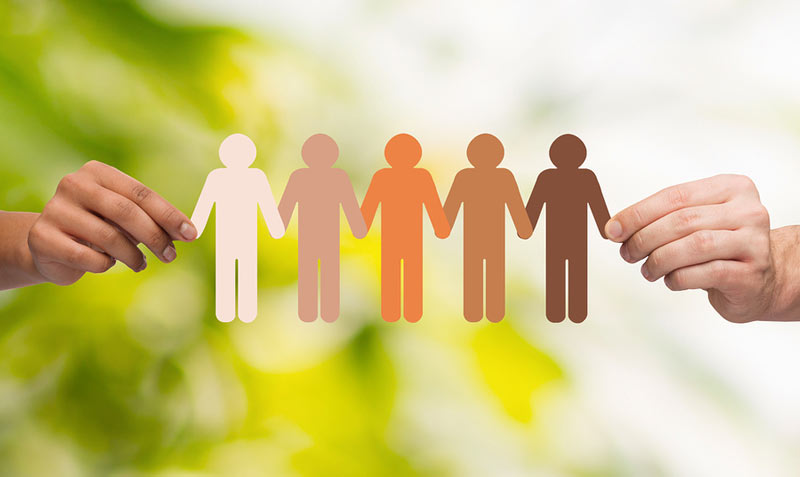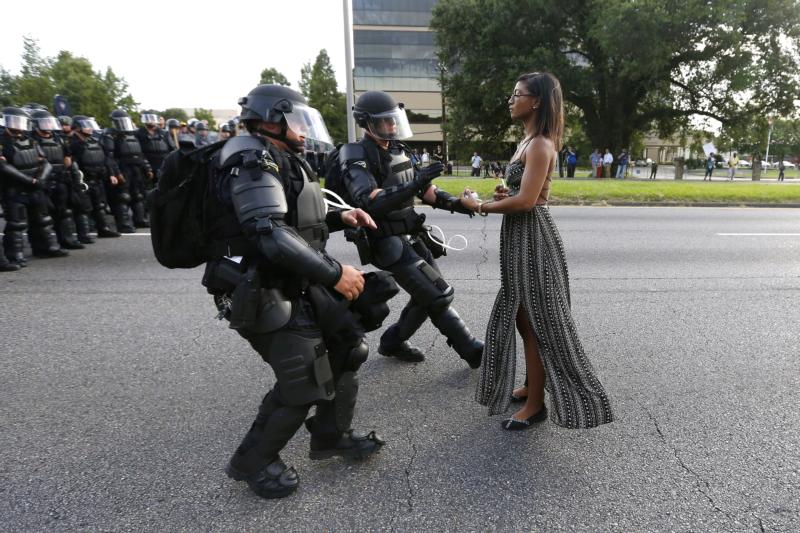
MINNEAPOLIS—When Ryan Hamilton first saw the now-viral video of George Floyd’s death, his first thought was, “Oh, another one.”
Hamilton said he had been desensitized by other videos of police brutality against black men, situations that never made it to national news, and thought Floyd’s killing would be similar.
But then “it spiraled,” he said. “It went from ‘just another one’ to a world-changing event in just a matter of days.”
The video shows Floyd handcuffed, face down on the ground, repeatedly saying “I can’t breathe” while a police officer kneeled on his neck for almost nine minutes.
Instead of silence, Floyd’s death spurred protests and riots around the United States and globe.
Now, Hamilton, a 40-year-old Catholic who lives in north Minneapolis, said the Church must take up the call for change. “It’s evil unchecked,” he said of race-related violence.
Hamilton grew up in Greenville, South Carolina, and attended St. Anthony of Padua Church, where his mother, Andrea, is still a parishioner; and St. Mary School.
He was a track and field athlete at Wake Forest University, earning a degree in history before going to Tulane Law School. He worked in politics in Washington and Minnesota, and now works at the University of Minnesota. He and his wife, Melissa, have two young children and attend the Basilica of St. Mary and Our Lady of Lourdes, both in Minneapolis.
Like many Minnesotans, Ryan and Melissa were glued to coverage of the protests. They sent their kids to stay with cousins outside the city for a few days because they were concerned for their own neighborhood, which is near the epicenter of protests.
His mom, Andrea Hamilton, said she watched the unfolding unrest from her home in Anderson, and was immediately concerned for the safety of her son and his family.
She is glad Ryan’s neighborhood escaped without too much violence and now hopes that the city of Minneapolis will work to address systemic racism and real reform in the police department.
Hamilton said he hopes the thousands of protesters will also show up at state capitols en masse to lobby for changes that directly impact people of color, such as education or home ownership disparities.
The current protests have changed how he feels, making him believe that “there is a need for that, for protesting just to grab the attention,” he said. “Now, the second line is to follow up with actual policy change, and that’s what I hope I can be a part of.”
He recalls his own run-ins with police. Some humiliated him, he said, in what he interpreted as race-related power trips.
Others showed great humanity. He remembers one time, speeding back to work after his first child’s ultrasound, euphoric to learn the baby was a boy and healthy. The speed limit changed, and a police officer pulled him over. He remembers being careful — keeping his hands in view, telling the officer he was going to show him a paper, the ultrasound photos, to explain why he hadn’t been attentive to the signs. The officer went back to his car, and was gone a long time. When he returned, he brought a teddy bear, and said he remembered being a new dad himself. Hamilton’s son, Augustin, sleeps with that bear now.
“That’s the treatment every human being should receive from the police,” he said.
Mrs. Hamilton said she recalls her own time, growing up in the South during the Jim Crow era and facing the constant racism of segregation. Like her son, she hopes the nationwide outrage over the murder of George Floyd could be a real turning point in the quest for racial justice.
“I believe the non-violent protesting is fine, but now what people need to do is protest against the things that are affecting daily lives — the disparities in education, health care, home ownership,” Mrs. Hamilton said. “I also believe the Minneapolis police department needs some serious reforms. People need to continue the protests and take their concerns to the state capital.
“We need to remember that we all basically want the same thing,” she said. “We want the best for our children, we want to live and we want to be treated with kindness and dignity and respect.”
Hamilton noted that the Church teaches about the dignity of every person, and so the Catholic response to Floyd’s death and racism in general should be clear and that their Catholic identity should be lived out every day of the week.
He said the casual, “not-being-true-to-the-principals-of-their-Catholic-faith is, in some cases, actually letting that evil fester, because it’s turning a blind eye to evil and letting it run rampant.”
The tenet, ‘what you do for the least of my people’ should be lived Monday through Saturday, not just Sunday, he stated, adding that Jesus didn’t separate himself from the poor or delegate his work to others. “Jesus got his hands dirty,” he said. “He lived among the poor.”
He encouraged people to examine their conscience and ask, ‘Where have I failed to do good?’
“I think that’s where the answers will come in,” he said, as white Catholics find their role in all this and join to renew the face of the earth.
Hamilton said he had a faith conversion around age 30 and since then has “led with his Catholicism” in terms of his own identity, and wants other Catholics to do the same.
“If people are leading with their whiteness” and being Catholic is secondary, “then that’s the problem,” he said. “I invite people to lead with their Catholicism, lead with their faith in terms of their worldview, and see where it takes us. I think that will be our role in making things better.”
It’s also a lesson he wants to impress upon his children. Because Melissa is white, Hamilton gave some thought to how their children might identify — black? white? biracial? — and then he decided to just eliminate confusion.
“I’m going to tell my kids they’re Catholic: that’s your race, that’s your identity,” he said. “I’m going to teach them to lead with that.”
By Maria Wiering, The Catholic Spirit
Christina Lee Knauss, reporter for The Catholic Miscellany, contributed to this report. Reprinted with permission from The Catholic Spirit newspaper from the Archdiocese of St. Paul and Minneapolis, Minn.



